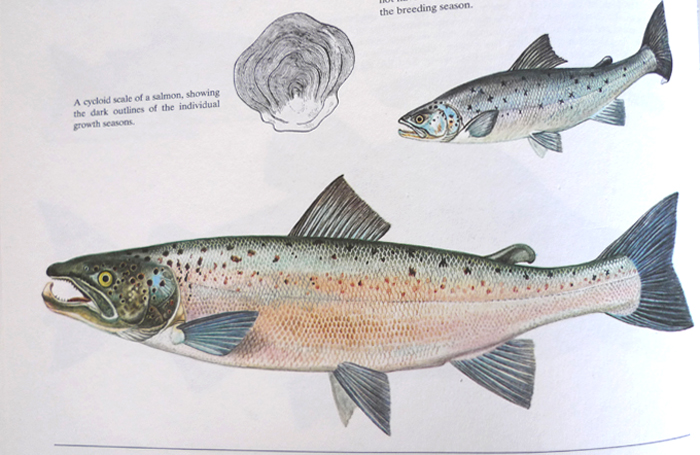The changing world of salmon.
We have long been connected to salmon, almost certainly for tens of thousands of years. Salmon divide their time between rivers and ocean. Rivers are a place of birth for them and a place of pilgrimage throughout life, a place to which salmon are drawn back time and again by their primordial urge to breed.

Long ago, before the days of medieval kings and knights, salmon were a staple food for nobles and commoners alike. Their movements marked the passing seasons. Come spring or early summer, migratory runs of salmon poured from the sea into rivers. In some places there were so many salmon there seemed more fish than water. It was as if rivers had turned around to flow back to their sources. These fish brought the abundance and rich productivity of the oceans to the doorsteps of those who lived far inland. The return of these lithe throngs must have appeared almost miraculous.
But in the 11th century the timeless regularity of the salmons’ world was transformed. The world of people was in transition. Our numbers were growing fast. To feed all these extra mouths agriculture spread across the land. Forests were turned into fields and ploughed up for crops. Ploughed land bled soil into rivers and lakes with every rain. It turned the nation’s waters from the clear, cool, and fast-flowing conditions salmon prefer to sluggish, turbid and warm. At the same time, human societies increasingly demanded power for corn mills and industry. They found it by harnessing the flow of rivers behind mill dams. Mills proliferated from a couple of hundred during the reign of King Alfred in the 9th century, to more than 5,000 recorded in the Domesday Book of 1086. These dams blocked salmon runs, preventing the fish from reaching their spawning grounds. Numbers collapsed almost everywhere and people turned to sea and other kinds of fish for food.
Yet still, by the 18th century, salmon could be a source of wonder to those who witnessed their passage. The naturalist Thomas Pennant wrote of salmon in the River Tweed in 1776. He said, the river “seems to be all alive; there is no having an idea of the numbers without seeing them”.
But the Industrial Revolution dealt salmon another blow. Further dams were built that blocked migrations, but this time sewage and industrial pollution created a new barrier, sucking oxygen from the water. Salmon numbers plunged. They almost disappeared from many of the country’s great rivers, like the Tyne, the Thames and Severn. Remarkably, they held on.
Today we are gradually repairing the damage done to our rivers so they can once again sustain salmon. For the last few decades salmon have fought back from the edge of extinction. But the salmon’s world is still in flux. Humanity has gained the power to change their oceans. The seas are warming, rising higher and becoming more acidic as carbon dioxide emissions dissolve in their waters. They have also become far noisier as human industry has moved offshore; oil rigs, ships and windfarms now fill the oceans with noise. Background noise levels have risen eight times or more since the 1950s.
Fish sense their world through sound to a far greater degree than most animals that live on land. You cannot see far underwater but you can hear over very long distances. Sound travels much farther and five times faster than in air. The rising clamour of human noise at sea might impair the salmon’s ability to sense their world through sound. There is another reason to fear for their future. Fish hear their world in part via earbones made of crystalline chalk. Rising levels of ocean acidity can lead to malformed earbones, so the salmon of the future may be hard of hearing; reducing carbon dioxide emissions is vital. The salmon’s future is once again in doubt. We must fight on their behalf once more, this time to clean up our skies. Will salmon endure this time? That is up to all of us.
By Callum Roberts, University of York.
July 2012